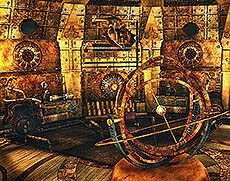Don’t forget technology
 |
| The purpose of particle physics is to better understand the rules that govern the universe. Long before the papers are written, accelerators and detectors must be designed, built and operated. It is technology that makes it all possible. |
Readers of Fermilab Today have read many articles on many experiments: CDF and DZero, LHC, the neutrino program, the muon program, astrophysics studies. These articles focus on the outcome of the measurements and what they tell us about the physical world. But the universe does not lightly yield its secrets. They must be wrested from the realm of the unknown in an effort that is often heroic.
How is it that we can make these measurements? How is it that the Higgs boson was discovered? How is it that we study the mixing rates of neutrinos? How is it that we hope to make and discover dark matter in the laboratory?
Long before a discovery, a brother- and sisterhood of physicists, engineers, computer professionals and technical support must come together to build the equipment that allows us to take data.
But before the data is taken, beams must be prepared. Accelerators, consisting of accelerating electric fields and confining magnetic ones, must be built. Control systems must be built that allow the accelerators’ operating conditions to be monitored and adjusted on time scales much faster than human reflexes can allow. Power supplies must be stable and vacuum pumps must run without fail.
On the detector side, using tiny slivers of silicon and large harp-like wire chambers, the path that particles traverse must be tracked with painstaking precision. Employing layers of metal and plastic or baths of liquid argon, scientists measure the energy of the debris of individual collisions. Muons, electrons, photons and bottom quarks must be identified.
Electronics, both custom and commercial, are needed to convert the data from blinks of light and pulses of electricity to numbers amenable to analysis. Computers and data networks are required to ship the information across the world and to extract the real meaning from what would otherwise be just a string of numbers.
In short, technology and human ingenuity are a crucial precursor to the conclusions made by the scientists who analyze the data. Technology makes it possible for laboratories like Fermilab and CERN to announce new insights into the workings of the natural world and, occasionally, a discovery that makes us rewrite the textbooks.
Over the next weeks and months, this Physics in a Nutshell column will pay homage to the heroes of technology and the techniques they have mastered. On behalf of the entire particle physics scientific community, we salute you.
—Don Lincoln
Have a question? Need a phrase defined? Email today@fnal.gov.
|